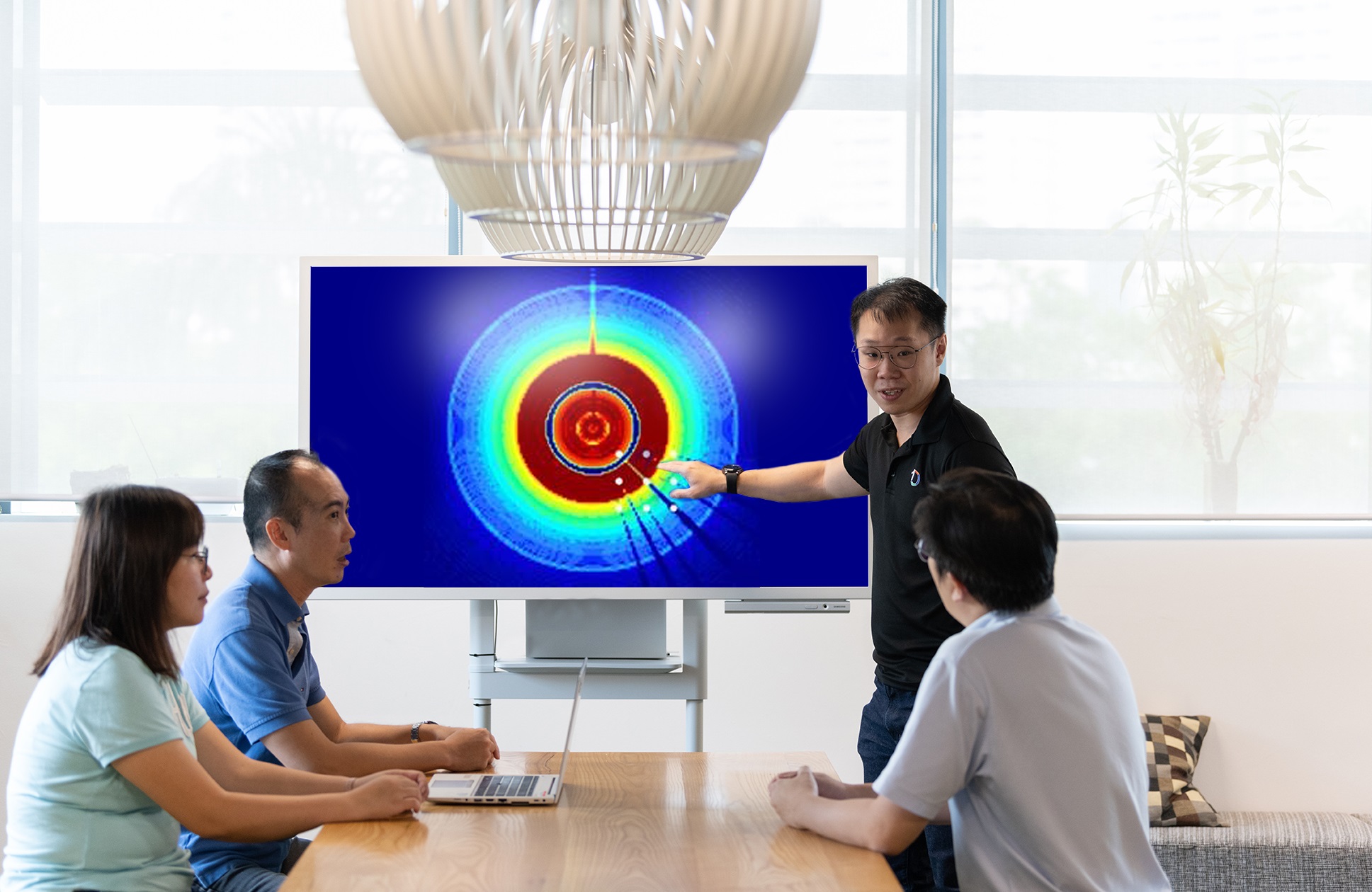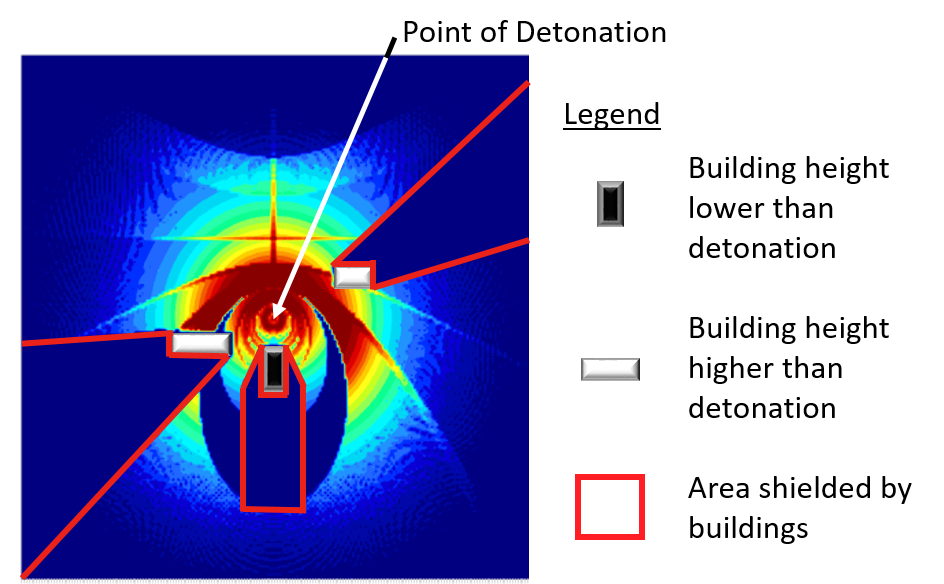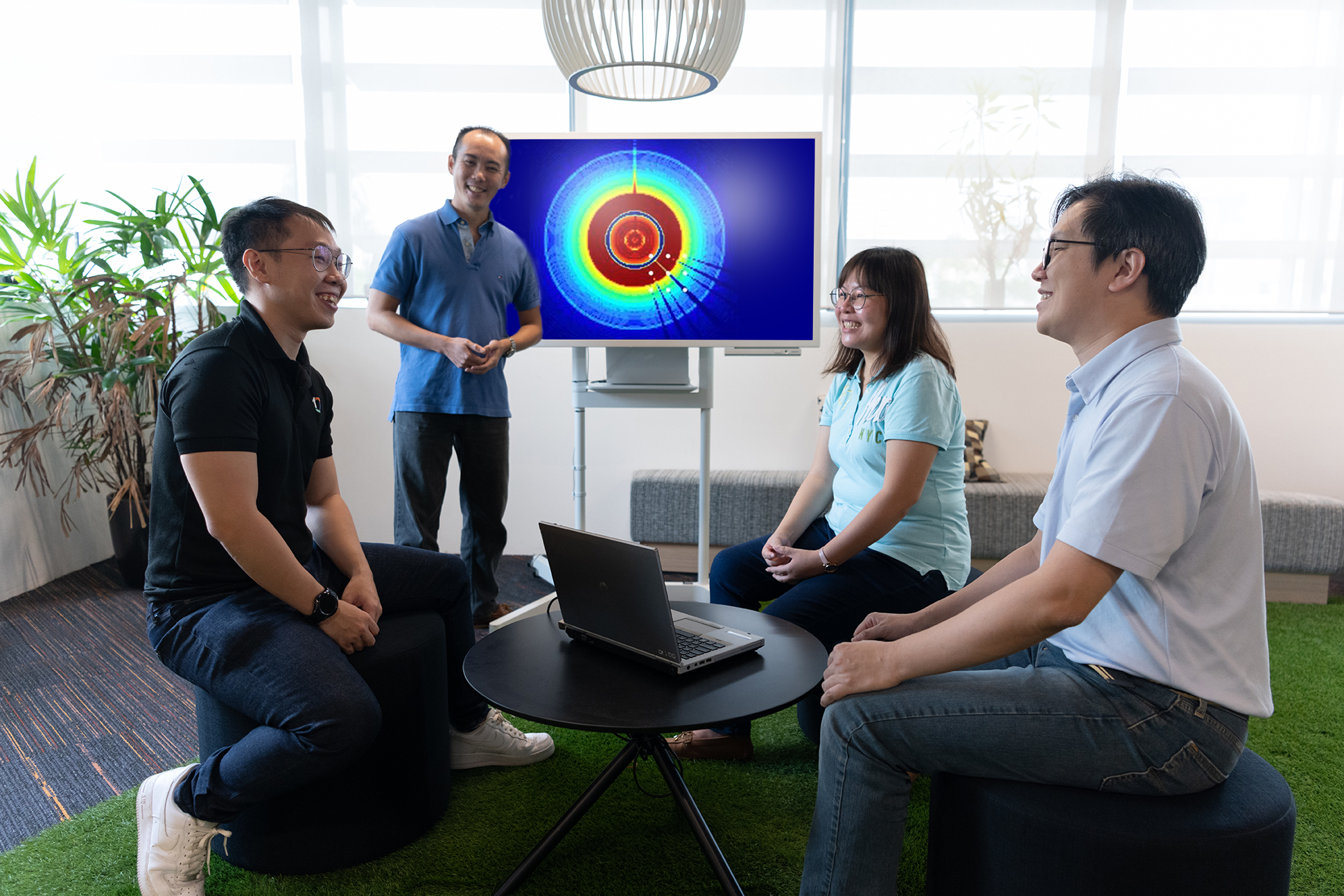Effecting Impacts
When it comes to weapon systems, it’s about more than just acquiring them – there also needs to be a way to analyse their effectiveness accurately and safely, especially in land-scarce Singapore.
In line with DSTA’s digital transformation efforts, our technologists are developing an in-house software tool that models and simulates fragmentation effects. This will help improve mission planning, and provide better assessment of a weapon’s effects.

“Instead of just relying on specifications and demonstrations provided by weapon manufacturers, our tool will be able to provide higher fidelity results accurately to assess a weapon’s effectiveness,” explained Programme Manager (Systems Management) Roy Goh.
By combining modelling and simulation technologies with suitable digital maps, it is envisaged that the tool will be able to build robust virtual environments to simulate various mission scenarios. The tool will also relieve users of manual calculations by performing complicated computing of weapon effects in their stead. This will allow users to test a weapon’s effectiveness in a virtual environment effectively and safely, and validate its specifications.

With the tool, users will be able to visualise weapon effects in simulated urban environments.
The added level of fidelity would be especially useful during acquisitions of new weapon systems, as the insights garnered would help teams make more informed decisions.
“This tool will give better and more refined fragmentation assessments. By bringing this new capability to the SAF, we hope to help push the envelope and tackle current limitations. We are excited to explore other potential applications,” added Head (Range Safety and Weapon Effects) Yuen Ming Fatt.

